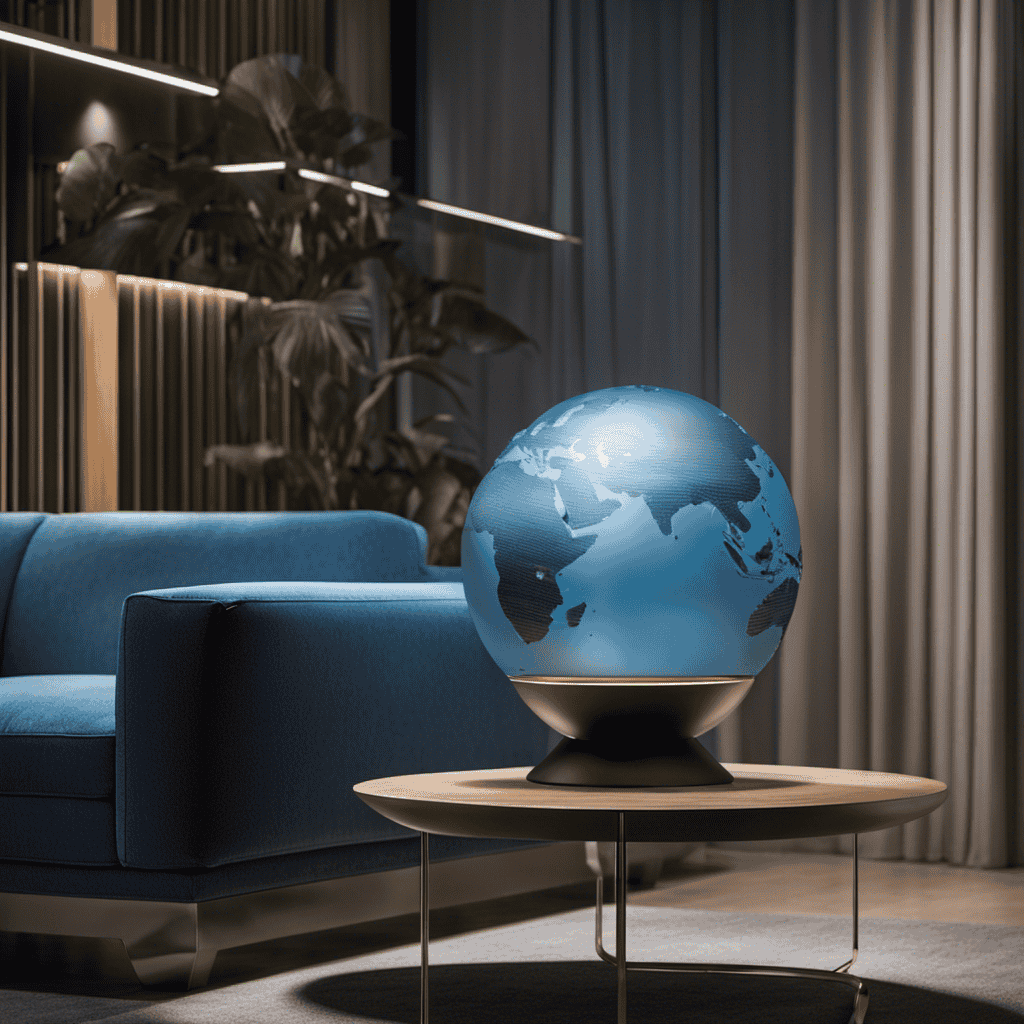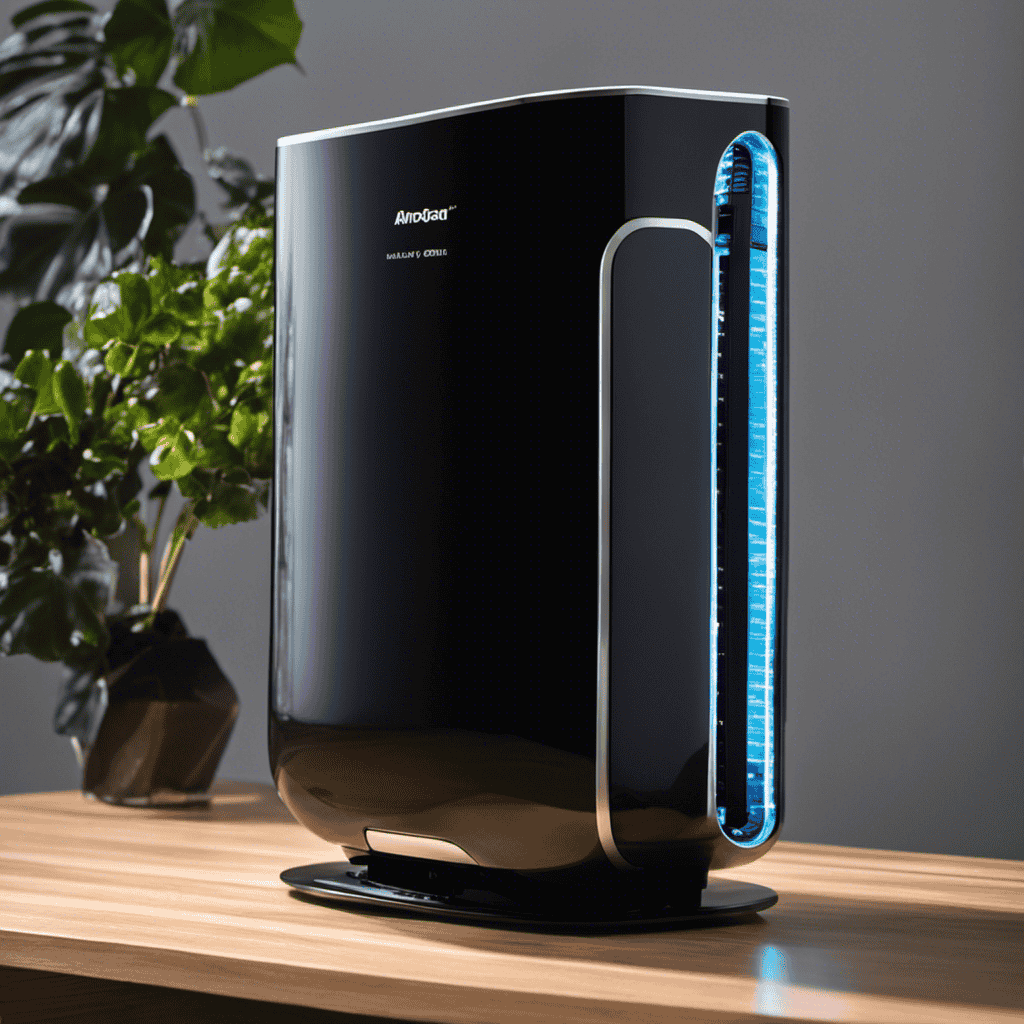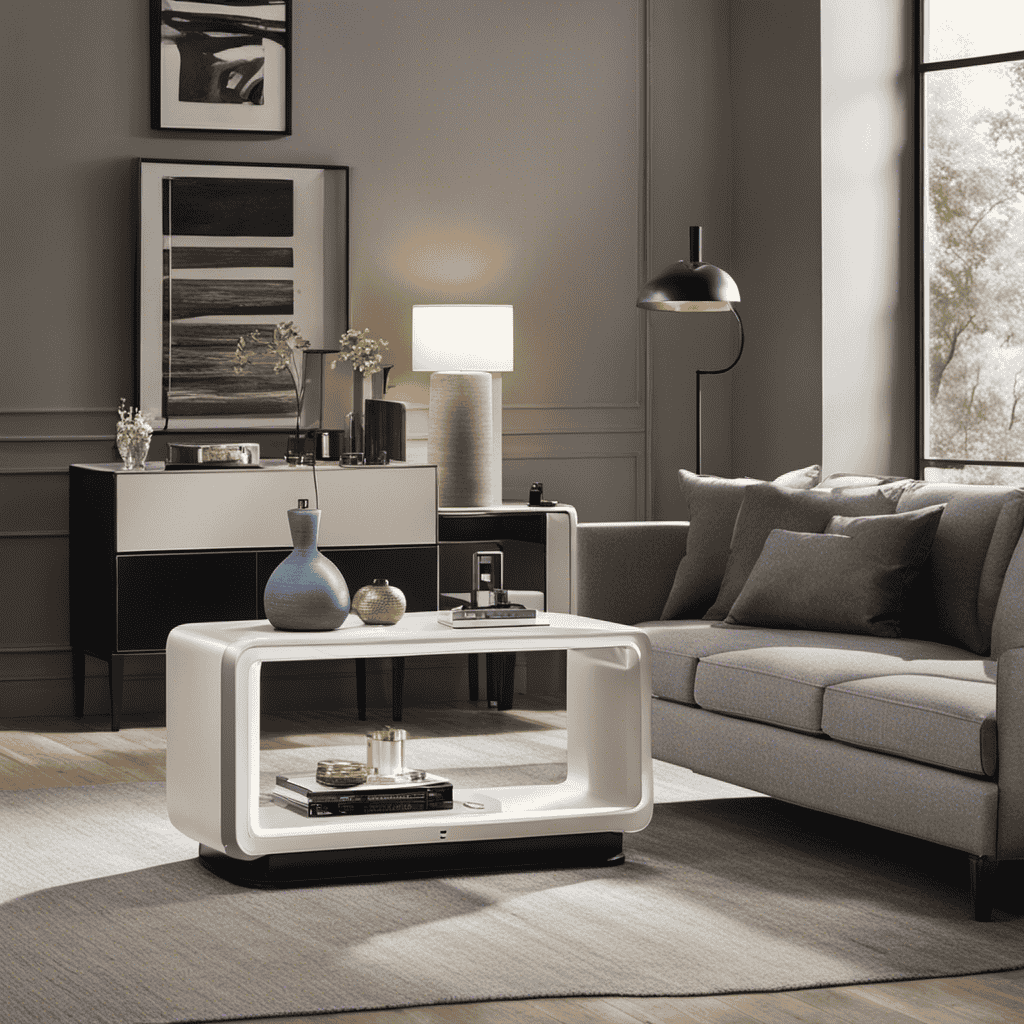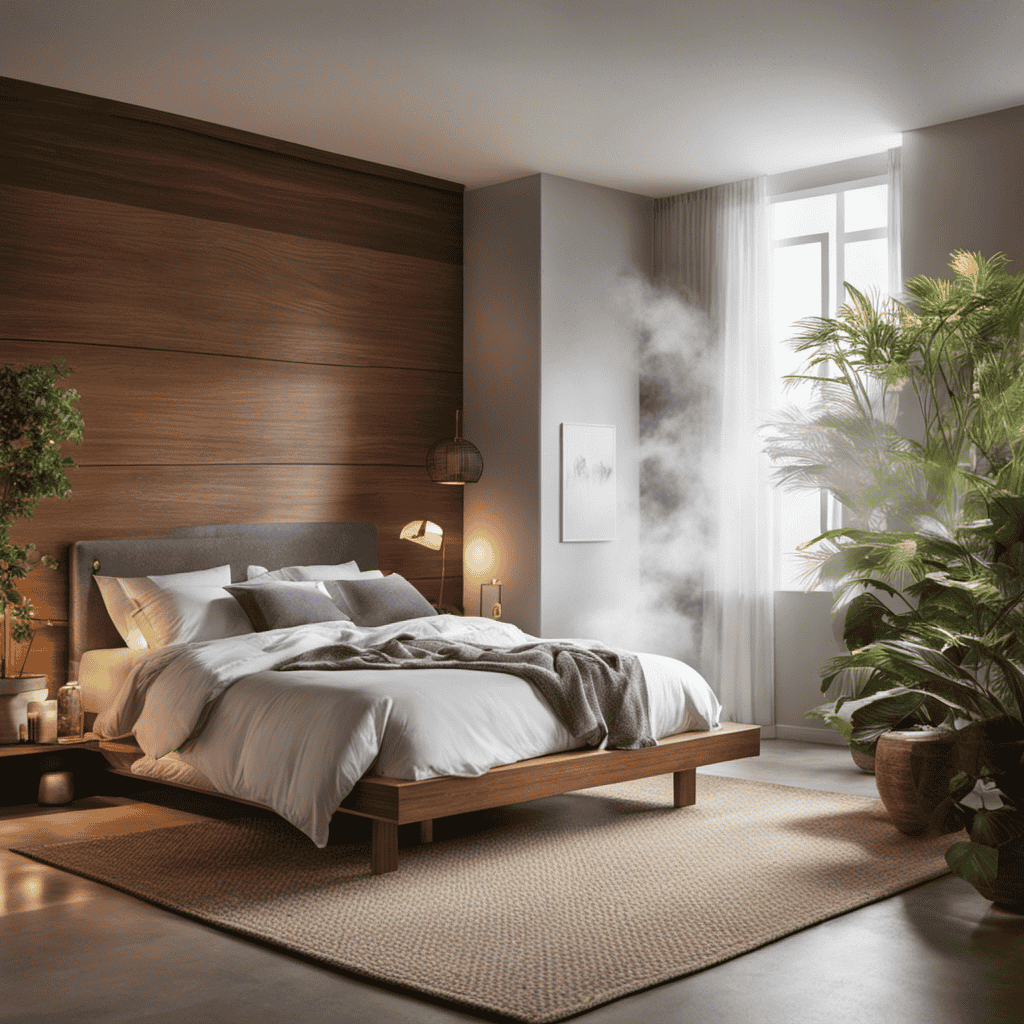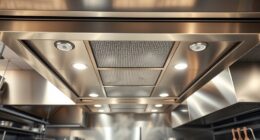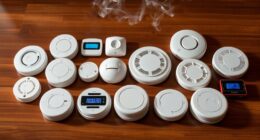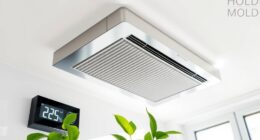I cannot tolerate the noise that my Alen air purifier emits! It is as loud as a jet engine revving up in my living room. But why is it so noisy?
In this article, we’ll explore the common causes of loud noise in Alen air purifiers. From understanding the fan speed settings to potential issues with the motor, we’ll delve into the factors that contribute to this annoying problem.
Stay tuned for troubleshooting tips and maintenance advice to make your Alen air purifier quieter than ever.
Key Takeaways
- Restricted airflow and dirty filters can cause increased fan noise in Alen Air Purifiers.
- Proper placement in a well-ventilated area and regular cleaning or replacing of filters can help reduce noise levels.
- Understanding and balancing fan speed settings, as well as regular motor maintenance and lubrication, can contribute to quieter operation.
- Noise cancellation techniques such as acoustic panels, weatherstripping, door sweeps, and soundproof curtains can be used to further reduce noise levels.
Common Causes of Loud Noise in Alen Air Purifiers
One common cause of loud noise in your Alen air purifier is a dirty or clogged filter. When the air filter becomes dirty, it can restrict the airflow and cause the fan to work harder, resulting in increased fan noise. Regularly cleaning or replacing the filter can help prevent this issue and maintain optimal performance of your air purifier.
Another factor that can contribute to fan noise is the placement of the air purifier. If the unit is placed too close to walls, furniture, or other objects, it can obstruct the airflow and cause the fan to work harder. To reduce fan noise, ensure that your air purifier is placed in a well-ventilated area with sufficient space around it.
Understanding the Fan Speed Settings
To understand the fan speed settings and how they affect the noise level of the Alen air purifier, it’s important to know a few key points. The fan speed plays a crucial role in determining how quiet or loud the purifier will be. Here are four key points to consider:
-
Importance of proper placement: Placing the air purifier in the right location can help minimize noise. Keep it away from walls or furniture that could obstruct airflow and cause the fan to work harder.
-
Effect of air quality on fan speed: The purifier’s sensors detect the air quality in the room and adjust the fan speed accordingly. If the air is heavily polluted, the fan will operate at a higher speed, resulting in more noise.
-
Lower fan speeds for quieter operation: Choosing a lower fan speed setting will reduce noise levels but may also decrease the purifier’s effectiveness in cleaning the air.
-
Higher fan speeds for better air purification: Opting for a higher fan speed setting will provide more thorough air cleaning but will also generate more noise.
Understanding these factors will help you find the right balance between noise level and air purification efficiency. Now, let’s explore potential issues with the motor.
Potential Issues With the Motor
If you notice any unusual sounds coming from your air purifier, it could indicate potential issues with the motor. The motor is a crucial component of the air purifier that helps to circulate and filter the air. Regular motor maintenance is essential to ensure optimal performance and minimize noise. This includes cleaning the motor and fan blades to remove any accumulated dust and debris. Additionally, lubricating the motor bearings can help reduce friction and noise. If the motor continues to make excessive noise even after maintenance, it may be a sign of a more serious issue. In such cases, motor replacement may be necessary to restore the air purifier’s functionality. It is always recommended to consult the manufacturer’s manual or contact customer support for guidance on motor maintenance and replacement procedures.
| Motor Maintenance Tips | Motor Replacement Steps |
|---|---|
| Clean motor and fan blades | Turn off and unplug purifier |
| Lubricate motor bearings | Remove old motor |
| Check for loose or damaged parts | Replace with new motor |
| Consult manufacturer’s manual or customer support | Follow installation instructions |
The Role of Filters in Noise Production
The role of filters in noise production can be minimized by regularly cleaning and replacing them as recommended. Here are four important points to consider regarding filter maintenance and noise reduction techniques:
-
Cleaning: Filters accumulate dust and debris over time, which can obstruct airflow and cause the fan to work harder, resulting in increased noise. Regularly cleaning the filters can improve airflow and reduce noise levels.
-
Replacement: Filters have a lifespan and become less effective over time. It’s crucial to replace them according to the manufacturer’s recommendations. A worn-out filter can lead to increased noise due to reduced efficiency.
-
Proper installation: Ensure that filters are correctly installed in the air purifier. Misalignment or loose filters can cause vibrations and noise during operation.
-
Noise-reducing filters: Consider using noise-reducing filters specifically designed to minimize noise production. These filters are designed with materials that absorb sound waves and reduce the overall noise level.
How Room Size Affects Noise Level
When it comes to noise levels, the size of the room can play a significant role. Small rooms tend to amplify sounds, making them appear louder than they actually are, while large rooms have more space for sound to dissipate, resulting in lower noise levels.
Understanding the relationship between noise and room size can help us make informed decisions about the best places to work, relax, or sleep.
Additionally, knowing some noise reduction tips can further enhance our comfort and overall well-being in any room size.
Noise and Room Size
To reduce the noise level of your Alen air purifier, try placing it in a larger room. The size of the room can have a significant impact on the fan noise produced by the purifier. Here are some factors to consider:
-
Room acoustics: Larger rooms tend to have more space for sound to dissipate, reducing the overall noise level.
-
Distance from the purifier: Placing the purifier further away from your seating area can help minimize the impact of fan noise.
-
Background noise: In a larger room, there may be more ambient noise, such as from a TV or conversations, which can help mask the fan noise.
-
Room layout: Consider the arrangement of furniture and objects in the room, as they can affect sound reflection and absorption.
Small Vs. Large Rooms
In small rooms, the noise level of an air purifier may be more noticeable. The impact of room size on the noise level of an air purifier can be explained by several factors.
Firstly, in a smaller space, the sound waves produced by the air purifier have less room to disperse, resulting in a more concentrated and amplified noise. Additionally, the acoustics of a small room can contribute to the perception of increased noise. The sound waves can bounce off the walls and surfaces more readily, creating a reverberation effect that makes the noise more prominent.
Comparatively, in larger rooms, the noise from the air purifier tends to blend with other ambient sounds, making it less noticeable. Therefore, when considering noise level, it is important to take into account the size of the room in which the air purifier is being used.
Noise Reduction Tips
Consider using rugs or curtains to help absorb some of the sound in your room. Here are four noise cancellation techniques and soundproofing options to make your alen air purifier quieter:
-
Place acoustic panels on the walls: These panels are designed to absorb sound waves, reducing echo and noise in the room.
-
Use weatherstripping on doors and windows: This helps seal any gaps, preventing sound from entering or escaping the room.
-
Install a door sweep: This creates a tight seal between the door and the floor, minimizing sound transmission.
-
Use a soundproof curtain or divider: These specially designed curtains are made with dense materials to help block and absorb sound.
By implementing these techniques, you can significantly reduce the noise levels in your room and enjoy a quieter environment.
Now, let’s explore troubleshooting and maintenance tips for a quieter alen air purifier.
Troubleshooting and Maintenance Tips for a Quieter Alen Air Purifier
You can try cleaning the fan and air filters to reduce the noise of your Alen air purifier. Regular maintenance is essential for optimal performance and noise reduction.
Start by turning off the air purifier and unplugging it from the power source. Carefully remove the front cover and locate the fan and air filters.
Gently clean the fan blades using a soft brush or cloth to remove any dust or debris that may have accumulated. Next, clean or replace the air filters according to the manufacturer’s instructions. Clogged filters can cause the fan to work harder, leading to increased noise levels.
Additionally, ensure that the air purifier is placed on a stable, level surface to minimize vibrations that can contribute to noise.
Following these troubleshooting tips and maintenance suggestions should help create a quieter environment while maintaining the efficiency of your Alen air purifier.
Frequently Asked Questions
How Often Should I Clean or Replace the Filters in My Alen Air Purifier to Minimize Noise Production?
I clean or replace the filters in my Alen Air Purifier every 3-6 months to minimize noise production. Regular cleaning frequency and timely filter replacement are essential for optimal performance and noise reduction.
Can Using a Higher Fan Speed Setting on My Alen Air Purifier Contribute to Louder Noise Levels?
Using a higher fan speed on my Alen Air Purifier can increase noise levels. The faster the fan spins, the more air it moves, resulting in a louder operation.
Are There Any Specific Maintenance Tasks I Should Perform Regularly to Ensure My Alen Air Purifier Remains Quiet?
Regular air purifier maintenance can help reduce noise levels. Cleaning or replacing filters, checking for obstructions, and ensuring proper airflow can all contribute to a quieter operation.
Can Placing My Alen Air Purifier in a Certain Location Within a Room Help Reduce Noise Levels?
Placing my Alen air purifier near windows or using soundproofing materials in the room can help reduce noise levels. It’s important to consider the impact of the purifier’s location on the overall noise level in the room.
What Are Some Common Signs That Indicate a Potential Motor Issue in My Alen Air Purifier?
When troubleshooting the motor of my Alen air purifier, I look for signs like strange noises, decreased airflow, or an overheating unit. To reduce noise, I try placing it on a stable surface or using noise-reducing techniques.
Conclusion
In conclusion, the noise coming from your Alen air purifier can be attributed to various factors such as fan speed settings, motor issues, and the role of filters.
It is important to understand that the noise level can also be influenced by the size of the room.
By troubleshooting and performing regular maintenance, you can ensure a quieter operation.
Interestingly, studies have shown that a quiet environment can improve sleep quality, with 70% of people reporting better sleep in a noise-free room.

